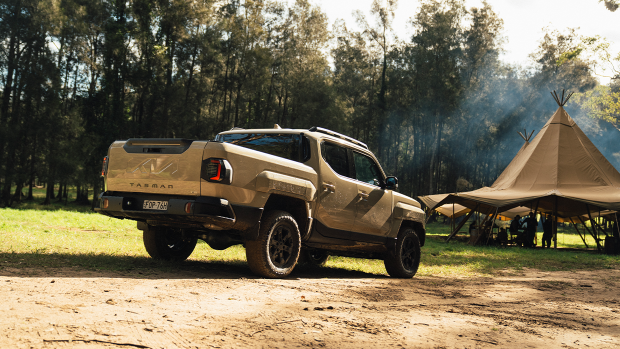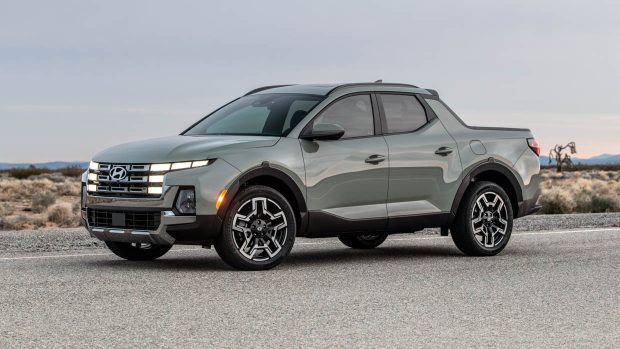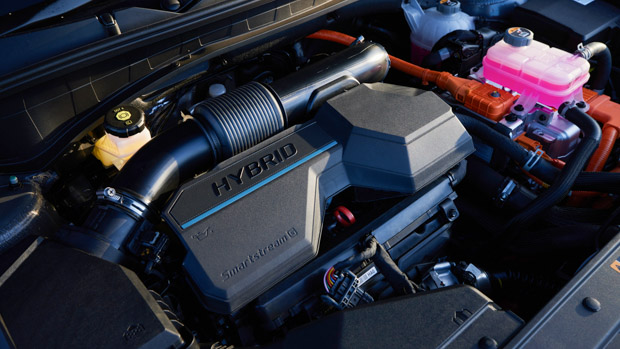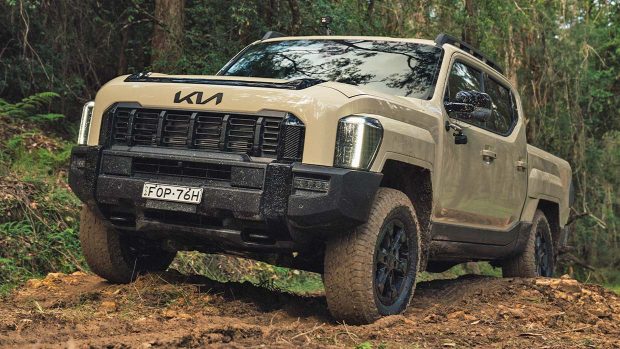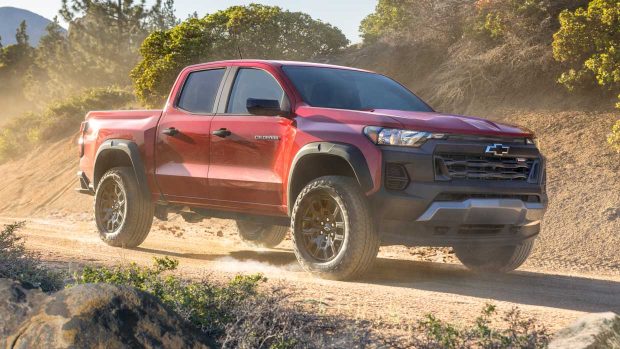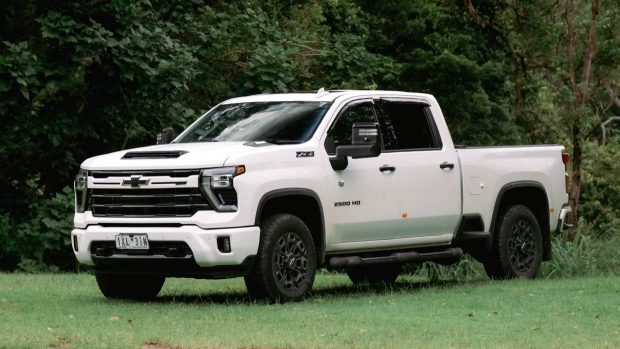-
Car Reviews
- All reviews
- Midsize SUVs
- Small cars
- Utes
- Small SUVs
- Large SUVs
- Large cars
- Sports SUVs
- Sports cars
- Vans
Latest reviews
- Car News
-
Car Comparisons
Latest comparisons
- Chasing Deals
Final decision to be made between two Hyundai ute options this year as new chief executive says a dual-cab is pivotal.
Newly-appointed Hyundai Motor Company Australia (HMCA) chief executive officer Don Romano has confirmed Hyundai will sell a ute in Australia after convincing global president Jose Munoz that a mainstream brand cannot be competitive in Australia without such a vehicle.
The leading plan is to redesign the Kia Tasman to suit Hyundai’s design language—but only if Hyundai can secure that vehicle with a hybrid (HEV) or plug-in hybrid (PHEV) engine, though diesel could come first.
If Hyundai headquarters cannot develop a Tasman-style vehicle with a hybrid engine, then Hyundai will look to its strategic partnership with General Motors (GM) to source a US-made pick-up for Australia.
“We need something that competes against (Ranger) and (Hilux) in the market,” HMCA boss Romano told Chasing Cars. “That is what sells here. That is what customers want. Every major manufacturer has one, and I don’t think you can be a viable brand (in Australia) without one.
“There have been thoughts in the past that maybe utes aren’t right for our brand and that thinking has changed and we see it as an imperative.”
The final decision on whether to refit the Tasman or go with a GM product will be made before the end of 2025, with Romano confirming that he wants a “locked and loaded production plan” in place by the end of 2028 when he faces mandatory retirement at 68 years of age.
Romano assumed leadership of Hyundai Australia as the first-ever non-Korean chief of HMCA seven weeks ago after a successful 11-year tenure as head of Hyundai Canada—a market where Hyundai sells the Tucson-based Santa Cruz.
The unibody Santa Cruz is not in contention to be Hyundai’s ute product for Australia because of economic factors even though Romano believes it would sell reasonably well locally.
“There is nothing wrong with the Tasman,” Romano told Chasing Cars. “It is a great infrastructure to build from.
“I have concerns with diesel, although I would take a diesel engine if there was a bridge strategy to something that would also meet towing capacity I would need, whether that be a hybrid, plug-in hybrid or an electric vehicle.”
Hyundai’s sister brand Kia developed the Tasman platform for both diesel and fully-electric (BEV) motors. Chasing Cars understands that the Tasman was not designed for petrol hybrid powertrains and this work would need to be completed to make the ute suitable for Hyundai.
While the fully-electric version continues in development in South Korea, Romano indicated that he would prefer a hybrid – though if electric was the only offer from head office he would indeed approve it for Australia.
A hybrid powertrain is “not readily available” for the Tasman platform, Romano told Chasing Cars, though adapting an existing Hyundai hybrid or PHEV system for use in the Tasman platform is a live option and the most likely to be approved at this time.
“Almost all of my discussions, all of my meetings I am having are to provide input in this area. They would not be asking for input at my level unless there was a serious need,” Romano said.
After basic underpinnings have been selected, Hyundai will need to rapidly design and plan the finished product while preparing local dealers to market and sell a ute to Australians alongside a range of vehicle customisation options.
“The type of ute we develop will determine the timeline. If we use the Tasman (platform) from the factory in Korea that could be soon—but then we have to ask if we want a diesel, and we need to look at the NVES and the impact that is going to have,” Romano told media.
Australia’s New Vehicle Efficiency Standard (NVES) laws were passed by the Albanese/Australian Labor Party federal government which was re-elected earlier this month, bolstering the view among carmaker executives that the laws are here to stay.
Under NVES, carmakers face fines if they sell too many cars with high CO2 emissions in a given year. Selling some ‘dirty’ cars can be offset if the carmaker sells a lot of low-CO2 cars in a year, such as full EVs, plug-in hybrids (PHEVs) and full hybrids.
Every year NVES limits get stricter. For light commercial vehicles (such as utes), the maximum CO2 emissions per vehicle sold to avoid fines start at 210g/km in 2025 and ratchet down to just 110g/km in 2029. Regular car limits go from 141g/km to 58g/km between 2025-2029.
If carmakers face fines for breaching NVES limits, those fines have to be paid—probably by increasing prices for customers. In the cut-throat ute segment, fine-driven price increases would make a car less competitive.
As a result, HMCA boss Romano does not want to rely on a traditional diesel engine for the Hyundai ute because without a hybrid, it will breach the CO2 limit. For example, the Toyota Hilux with 4WD and 2.8-litre diesel produces 207g/km of CO2 – just shy of breaching the 2025 limit.
But Romano would accept a Hyundai ute with the Tasman’s 2.2-litre diesel engine in the short term to get the ute onto the market—but it would need to be replaced with a petrol hybrid or PHEV rapidly to avoid becoming a huge NVES/CO2 headache for the manufacturer.
“We are looking at different drivetrains, but all of that adds time,” said Romano.
For HMCA to bring a ute to Australia on the Tasman platform it will need to be assured that its diesel engine would be transitioned to a hybrid powertrain before NVES limits really bite by the end of this decade.
If a hybrid cannot be developed promptly for use in the Tasman platform then it is more likely that Romano will lobby global Hyundai chief Munoz to tap General Motors to supply a hybrid, PHEV or even BEV ute to Hyundai.
A partially or fully electrified Hyundai/GM ute collaboration would be manufactured in the United States—to be sold in the US, Australia, and other markets that would benefit from a larger and more premium ute.
The GM option would not compete with the Ranger, Hilux and Tasman but rather the larger pick-up segment populated locally by the RAM 1500, Ford F-150, Chevrolet Silverado and Toyota Tundra.
Such a strategy is not HMCA’s preference as the vehicle wouldn’t sell in the heart of the Australian ute market. In 2024, almost 230,000 midsize utes sold in Australia; the segment is 20 times larger than the large US pick-up class (10,611 deliveries in 2024).
General Motors has commenced development of PHEV versions of its Chevrolet Silverado and GMC Sierra twin full-size pick-ups. The Silverado and Sierra are available with petrol and diesel powertrains while a BEV version of the Sierra is also on sale.
“(GM utes) are different (to Tasman),” Romano said.. “They have different potential designs and styles we would achieve. I’m never going to talk badly about our sister company (Kia) but the design wouldn’t fit for us and what we are trying to achieve.
“It wouldn’t be my first choice at this stage, given what I know. I would prefer to be able to get it out of Korea. The distribution channel, exchange (rate), ease of doing business and combining with other products we get makes a lot more sense from a financial perspective.”
Latest news
About Chasing cars
Chasing Cars reviews are 100% independent.
Because we are powered by Budget Direct Insurance, we don’t receive advertising or sales revenue from car manufacturers.
We’re truly independent – giving you Australia’s best car reviews.

